Dr. Shaun Hutchinson, responsible for Automotive and Transport Design at the Coventry University is planning some research on two wheeled electric vehicles with the NTDC National Transport Design Centre at Coventry University. He has asked Electric Motorcycles News if we could help him with this project.
Dr. Shaun Hutchinson: “Initially we aim to better understand the new generation of two wheeled vehicle users with a questionnaire. Then from this research, design a series of honest eMotorbikes with fresh young designers (‘next generation kids’ as I effectionately refer to them) that interpretate the knowledge gleened from initial research. In the long run we hope to produce some full sized models that help to exemplify the research.”
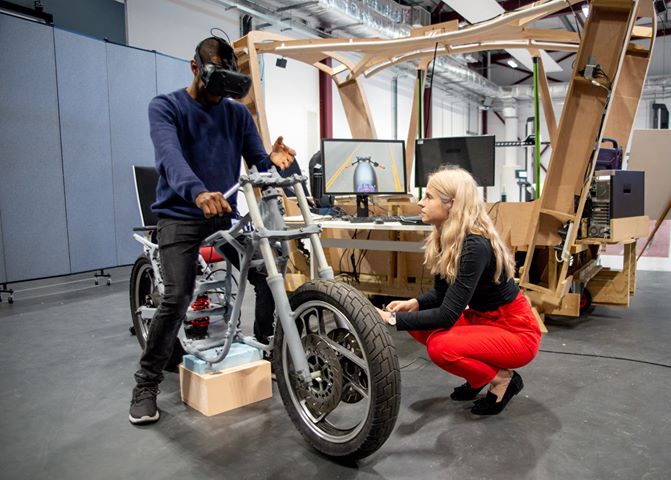
In this first phase, Dr Shaun Hutchinson wants to launch a survey and focus on groups with X-Generation (born between 1960’s and 1980’s), Y-Generation (born between 1980’s and 1990’s), and Z-Generation (born between 1995 and 2014). Users will be conducted to underpin a set of design guidelines. He is also interested in the opinion from the new millenial user as well as the traditional motorcycle user.
Dr. Shaun Hutchinson: “Users in UK, Europe, US, and China are of interest. UK and Europe because they are a home market, and China as a comparator because of their successful adoption of electric sustainable vehicles. Low and high volume manufacturing models are of interesting to understand which of the designs or features can be realistically be offered to users.”
It does not matter if participants own a two-wheeled vehicle or not. All perspectives are of interest. It is an easy multiple-choice format and takes approximately 5 minutes to complete. You’ll find the survey here:
https://coventry.onlinesurveys.ac.uk/sustainability-and-2-wheeled-electric-transport
Dr. Shaun Hutchinson: “It would be great to get all your help with this. I really think it is important to embrace the ideas and motivation of the eMotorbike community in this research.”
the SET project
The project is an initiative from the National Transport Design Centre (NTDC). NTDC is a state-of-the-art facility, operating within the University’s Centre for Future Transport and Cities.
Opened May 2017, the NTDC is designed to explore new areas of transport design research and find new ways to use existing equipment, as well as creating new technologies. It’s both provocative and surprising, ambitious and disruptive, creating real transferable outcomes and impact.
More info on what they do can be found in this link from the University >
This project aim is to gain a contemporary and new understanding of user experiences for future conceptual and innovative sustainable two wheeled electric transport designs. Consumer acceptance, recycling, sustainable technology, sustainable materials, and business models are the main focus of the research, asking: ‘What are the most appropriate designs for future generations’.
The project aim is to gain an in-depth understanding of user experiences for current and future conceptual and innovative sustainable electric transport designs. Outcomes and benefits are:
- Set of design recommendations to guide future two wheeled vehicle designers
- A set of exemplary sustainable electric transport designs that are appropriate for various age generations
Automotive and Transport Design | Coventry University
Students start from hand drawn sketches before moving on to 3D CAS (Computer Aided Styling) or clay models. A typical sketch can be seen in Jamie Whiltshire’s E-Runner speedsketch …
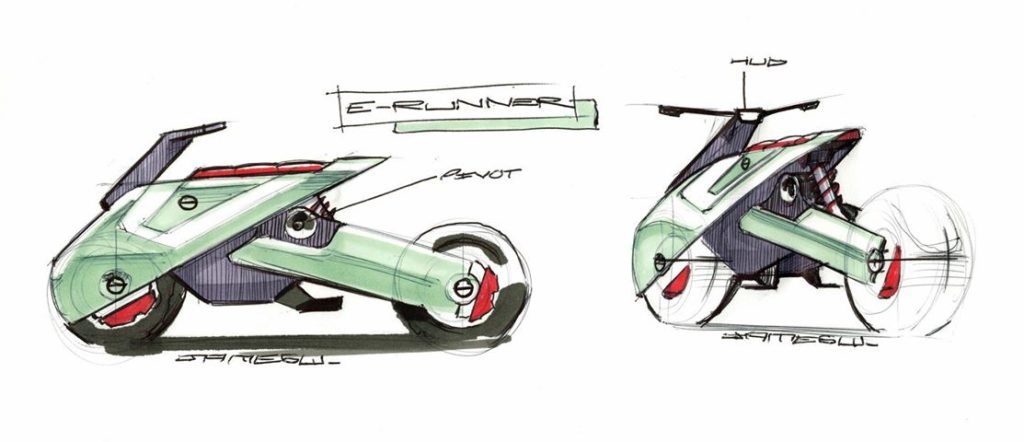
Design: Jamie Whiltshire
… or Ben Thompson’s E-Moto below
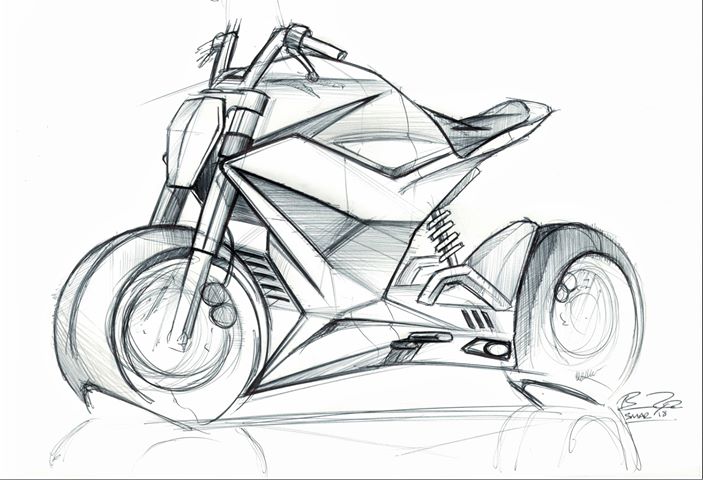
Design: Ben Thompson
In our facility we do a lot of virtual and mixed reality design development. We use various technologies from simulators that are loaded with sensors attached to various gaming engines. These engines make parts movable in a rendered environments while giving users real objects to interact with.
The XJ600 frame we are designing for X, Y, and Z generations is a good example of this. The Xj600 frame in the images below has been scanned into 3D CAD with our scanners and students produce designs using the frame and a electric technology package. The designs are milled out in hard foam and then attached to the frame, calibrated to a virtual environments so various materials colours can be seen while users interact with the physical models. Normally this process is done to assess acceptance of different designs.
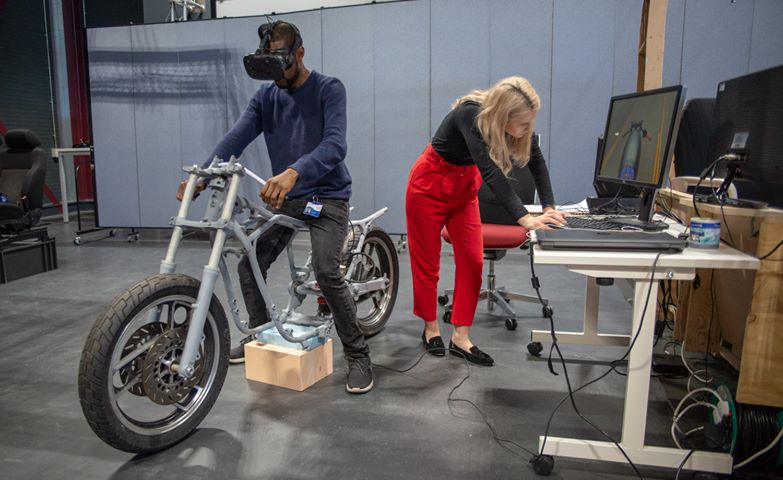
We have similar systems for automotive interiors. Participants and designers sit in a simulator so they can observe interiors in different specs.
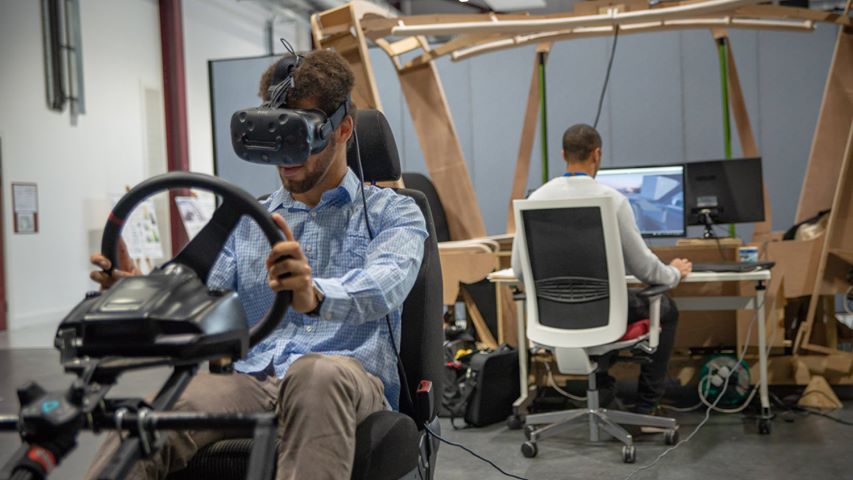
We also have clay facilities where students imagine new designs using traditional sculpting methods. In the photo below Mark Piper – 2018 Pirelli National Superstock 600 championship contender – working on his future e-Moto design while at Coventry University this year
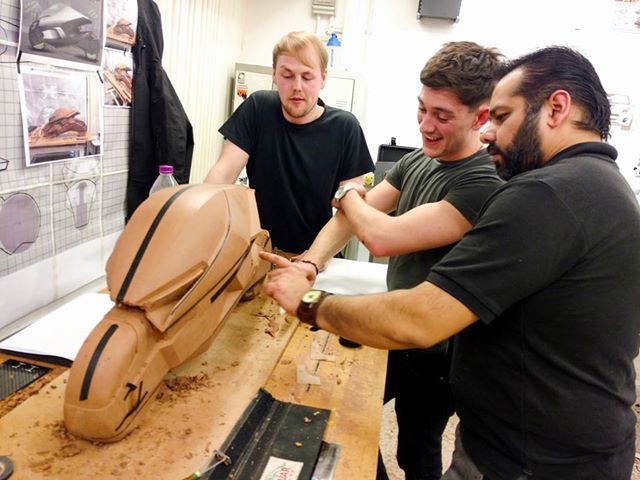
From this scale clay model he produced a hard model that can have colours and materials applied to it.
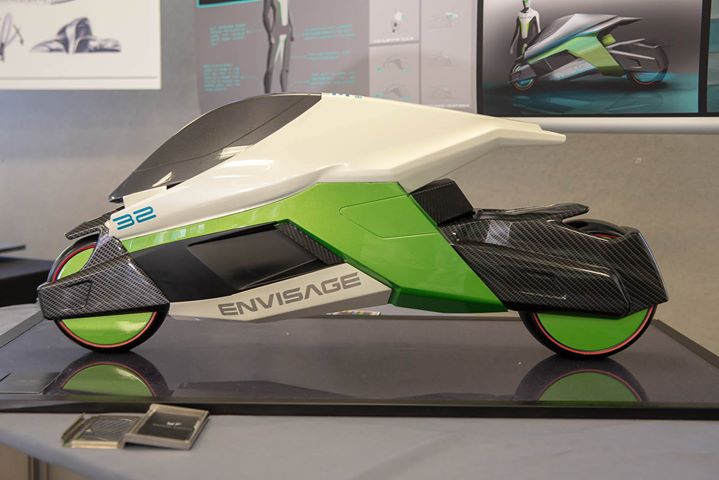
More info? Check the website of Coventry University >